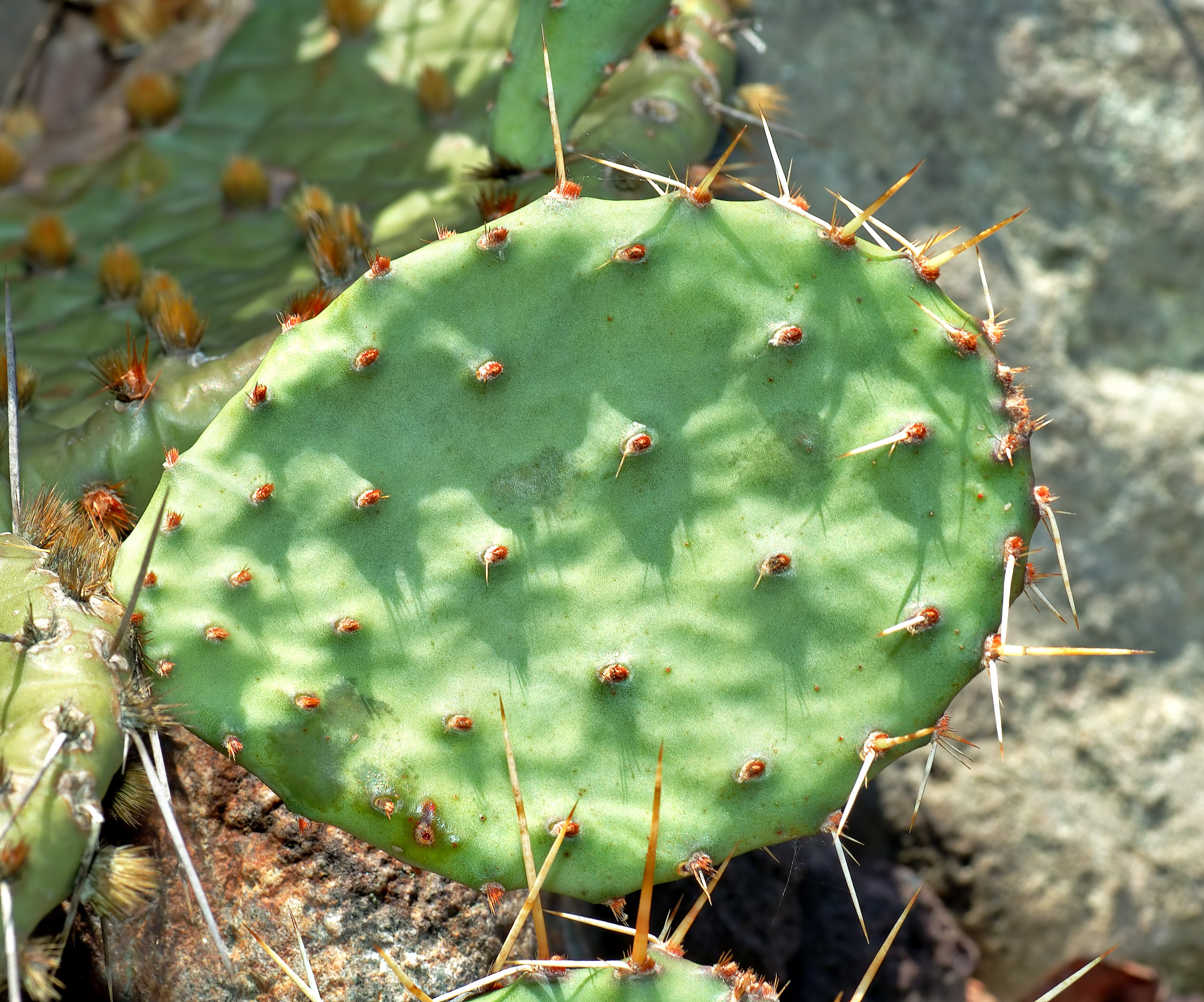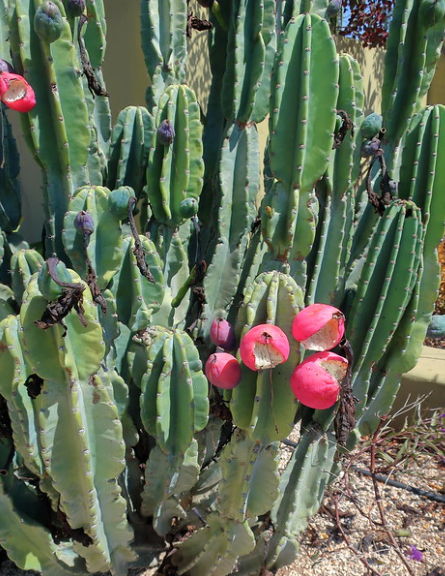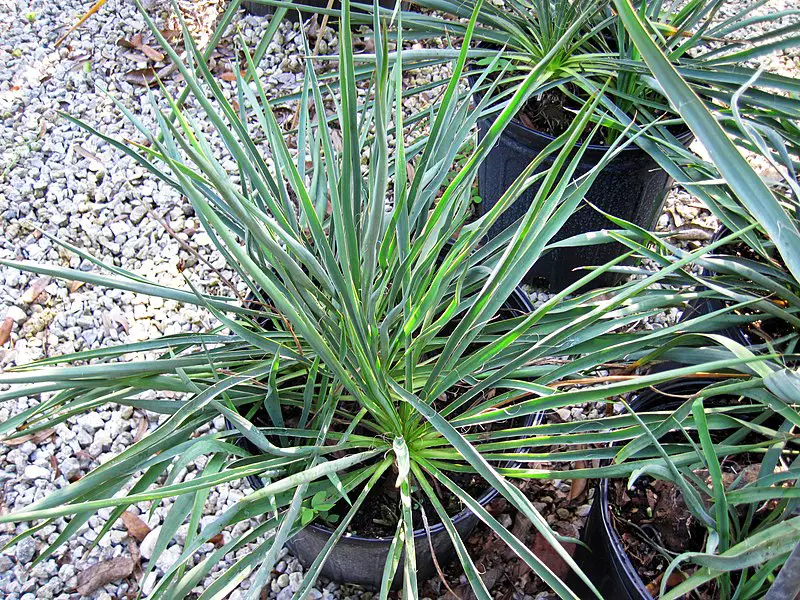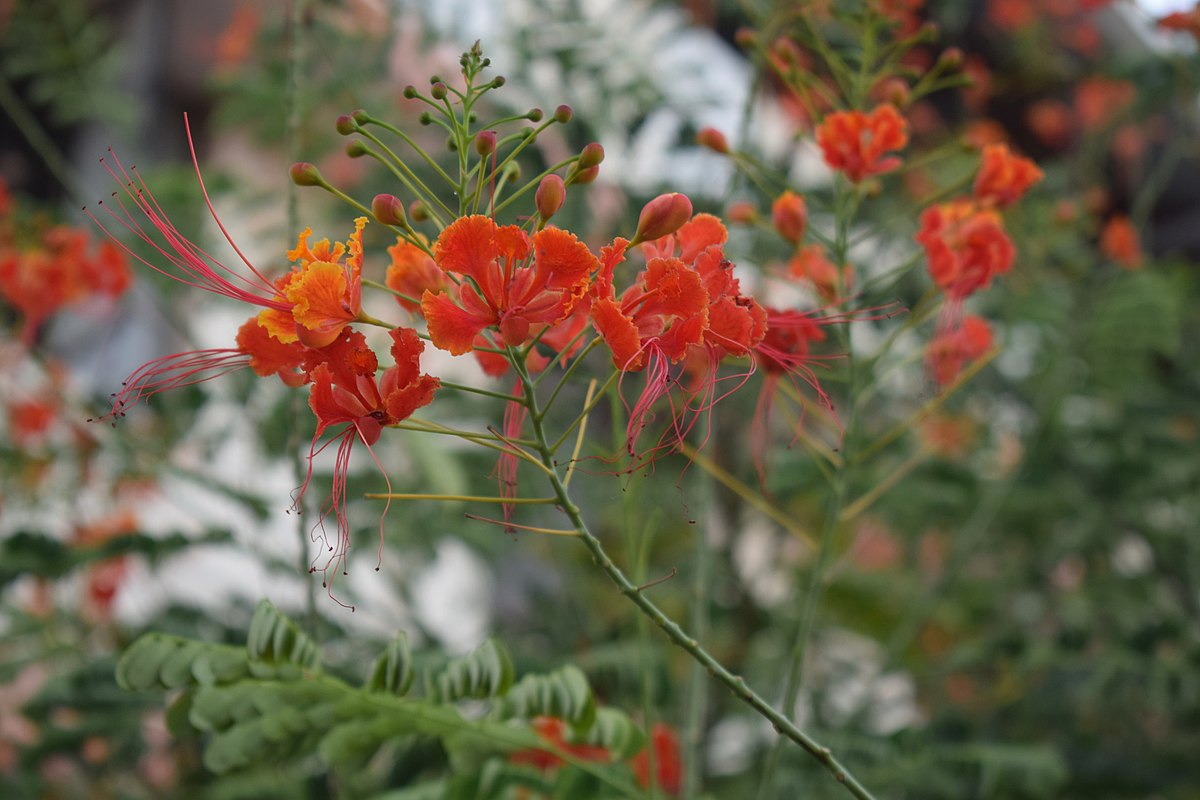If you are a lover of desert plants but you always thought you lived somewhere too cold to support those beautiful desert shapes. Well, that’s where growing desert plants in pots come in.
Easily moved, by growing desert plants in pots, you can move them from your garden during the warmer summer months into the protected environment of your home during the winter.
But not every dessert plant will be happily grown in a container, so you need to pick a container-friendly plant if you are hoping to grow a desert plant in a pot and create your very own desert-style oasis.
Here are some of my favorite container-friendly desert plants to bring a little bit of desert life to your backyard:
Prickly Pear Cactus (Opuntia compressa)

The popular cactus plant is famous for its rounded, prickled leaves and vivid fruits.
You’d be forgiven for assuming this desert plant was native to the dry and dusty desert.
It’s actually native to the northeastern US, but this is great news for colder-climate dwellers as it can be grown as far north as zone four without having to bring it indoors.
Once fully mature, the prickly pear cactus reaches around 12 inches tall maximum, which makes it perfect for growing in pots.
It even grows completely edible fruit, so it is like a prickly fruit tree.
Easily propagated, this desert plant favorite also boasts delicate yellow flowers but be prepared to wait a few years before its very first blossom.
- USDA Growing Zone: Zones 4-9
- Color Variations: Yellow, Yellow with orange/red center, Green
- Sun Exposure: Full sun, partial shade
- Soil Needs: Well-draining
Peruvian Apple Cactus (Cereus peruvianus)

This column-style cactus is another prickly desert garden favorite.
It comes armed with thorns and brown spines, so it may not be a great choice if you have young children.
Native to countries like Brazil and Uruguay, the Peruvian apple cactus also produces edible fruit but is only hardy in zones 8 to 11; however, if you live further north than zone 8, growing this in pots means you can safely overwinter it in your home.
In the wild, Peruvian apple cacti can grow to be a staggering 30 feet tall, but by growing this beauty in a pot, you will stunt its growth to something a little more manageable.
Showing off delicate blooms in shades of white and pink, this cactus is much more than its spiny columns and provides stunning interest for a good part of the year.
- USDA Growing Zone: Zones 8-11
- Color Variations: White, Pink
- Sun Exposure: Full sun
- Soil Needs: Well-draining
Adam’s Needle (Yucca filamentosa)

This slow-growing, evergreen shrub is another cacti relation that will give you the desert look you may be dreaming of.
It is generally considered to be a perennial plant and displays delicate flower stalks that can grow to be 5 to 8 feet tall.
These white bell-shaped flowers provide some really unique interest, but Adam’s needle yucca will only bloom once it is fully mature.
The leaves of Adam’s needle are blade-like in shape, and the relatively harmless spines only seem to grow on the outer tips of the leaves.
These stunning foliage clumps can generally grow to around 2 or 3 feet tall but may be smaller if grown in a container.
- USDA Growing Zone: Zones 5-10
- Color Variations: White, Green
- Sun Exposure: Full sun
- Soil Needs: Well-draining
Aloe Vera (Aloe Vera)

Not only a fantastic plant to grow if you are trying to create a desert-type atmosphere, but the Aloe Vera is also a rather handy medicinal plant to keep at hand.
The gel that oozes out of the Aloe Vera plant is commonly used as a soothing salve for the skin.
A mature Aloe Vera can grow to be around 1 to 2 feet tall but may mature at a much shorter height if grown outdoors in more northern states.
Aloes aren’t very cold-hardy and are perfect for pot-growing, so they can be brought in out of the cold.
You may be well familiar with the traditional green Aloe, but there are many different varieties if you are looking for a little extra color.
‘Lime Fizz’ is a compact aloe that features unusual orange markings along with its leaves, and then there’s the Torch Aloe that is much larger and has beautiful tall red flowers.
- USDA Growing Zone: Zones 10-12
- Color Variations: Yellow, Red, Orange, Green
- Sun Exposure: Full sun to partial sun (outdoors), indirect sunlight (indoors)
- Soil Needs: Well-draining
Red Bird Of Paradise (Caesalpinia pulcherrima)

This showy plant with its vivid red and yellow flowers is actually native to the Caribbean and is the national flower of Barbados, but it’s become a very common flower in desert gardens and homes.
It has become fairly adapted to withstand the temperatures of zones 8 to 11, but in colder climes, it does far better if you can take it in during the winter.
In frost-free areas, this plant is actually an evergreen, and it can grow to be up to 10 feet in height if grown directly in the soil.
The leaves of the red bird of paradise are green, but once cooler weather sets in, they will turn bright red until they are killed off for the winter.
- USDA Growing Zone: Zones 8-11
- Color Variations: Orange
- Sun Exposure: Full sun
- Soil Needs: Well-draining

Looking To Buy One Of These Desert Plants?
Head over to Nature Hills – Americas Largest Plant Nursery.
High quality plants with fast, safe shipping at fantastic prices.
Where To Keep Your Potted Desert Plants
The zone you live in will always dictate where you should keep your potted desert plants.
For those of us who live in cooler climates, most of our potted desert plants will need to be brought inside once there’s any sign of frost, and warmer climate dwellers should be able to keep their potted desert plants outside for much more of the year.
Most desert plants can handle a decent amount of full, direct sunlight but also a little partial shade.
These types of plants are incredibly versatile, which gives us more options for their placement in the garden and in the home.
However, properly research each plant to be sure of its sunlight requirements, or you could end up accidentally making your desert plant very unhappy.
How To Ensure Your Desert Plants Thrive In Pots
If you want to grow lustrous desert plants in containers, here are a few things you need to know to help your plants thrive in their pots for many years to come.
Soil For Desert Plants
Most desert plants will require really well-draining soil.
As you can imagine, many of these plants have evolved to survive through droughts, and their roots can become incredibly unhappy in more moist conditions.
Sandy soils are usually best for these types of plants; water will drain freely and help you to avoid overwatering your desert plant.
It is also commonly recommended to mulch your desert plants with inorganic materials, such as rocks, pebbles, or gravel, instead of the organic materials, like bark, that you may be more familiar with as mulch material.
Feeding Desert Plants
Deserts are notorious for their nutrient-low sandy soils, and this means that most desert plants won’t require much fertilizing, if any at all.
They are perfectly adapted to surviving with far fewer nutrients than many of our other garden plants, and over-fertilization could actually cause issues with your desert plant.
So it’s best to avoid using a fertilizer with desert plants if you want to keep them happy and thriving.
Watering Desert Plants
Most desert plants can survive with very little water once they are fully established, but this maturity can take 2 to 5 years.
Newer plants will need a little more water to ensure they thrive well.
Desert plants should be watered deeply every couple of days for the first 2 weeks after planting, and then you can slowly reduce the watering until you are only watering them once a week.
Make sure to water deeply, or you can foster short and weak root systems.
By watering deeply, you are encouraging your desert plants’ roots to grow deep, and it is this root growth that helps them survive with less water once they are mature.
Lastly
Desert plants are relatively easy plants to grow in pots; they require no fertilization, very little water once they are established, and can generally withstand a decent amount of neglect.
In many zones, they are also incredibly hardy and will provide all-year-round interest with their evergreen leaves.
It can actually be difficult switching from more traditional garden plants to desert plants as you will be so used to the more intensive care of regular plants.
However, desert plants provide us with a unique opportunity to enjoy a garden full of color, interest, and even medicine, with a lot less work needed.
Other guides in this series:

